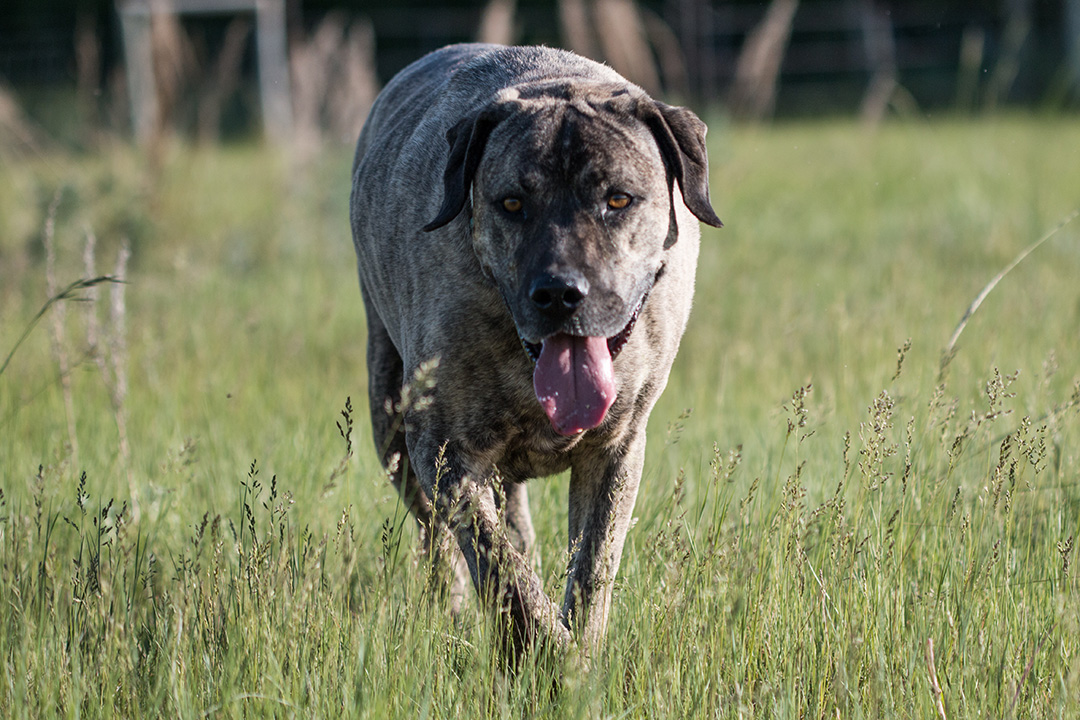
Banned rodenticide still endangers pets’ lives
It’s been a year since Saskatchewan banned the use of strychnine to control rodents, but a University of Saskatchewan (USask) veterinary toxicologist is warning that the highly toxic poison continues to threaten the lives of animals in the province.
By Tyler SchroederDr. Vanessa Cowan (DVM, PhD), an assistant professor at the Western College of Veterinary Medicine (WCVM), said the number of reported dog poisonings has remained high over the past year.
Strychnine, a rodenticide that affects the nervous system of animals, was previously used across Canada to control rodent populations. But in March 2021, Health Canada’s Pest Management Regulatory Agency de-registered strychnine as a rodenticide—mainly because of its harmful effects on wildlife species, companion animals and other animals that are accidentally poisoned.
In March 2023, the Saskatchewan Ministry of Agriculture banned the use of strychnine in the province after a phase-out period of two years.
Cowan said that recent cases of strychnine poisonings in dogs are very concerning. Once ingested, the toxic compound causes painful clinical signs with limited treatment options available for poisoned animals.
“The onset of clinical signs can be quite rapid. Within 15 to 20 minutes of ingestion, the animal will start seizing which is characterized by very stiff limbs or extensor rigidity. The extensor muscles will pull the legs straight and keep them stiff,” said Cowan.
Since there’s no antidote for strychnine poisoning, veterinary professionals can only provide supportive care and try to control the affected animals’ seizures. Cowan said most animals die within a few hours of ingesting the deadly poison—often during the trip to the veterinary clinic.
Dogs have been the primary strychnine victims in Cowan’s case data, but she noted that other species have also been affected. Livestock such as horses and cattle as well as chickens and scavenging birds have been affected by poisonings.
Strychnine use can also lead to “secondary toxicity” in which other animals can become poisoned after consuming or scavenging the carcasses of animals that were poisoned with strychnine. And while most poisonings have occurred in rural settings, some strychnine poisonings have also occurred in Saskatchewan’s urban centres.
These variables pose challenges for Cowan and other experts in pinpointing the root causes of why strychnine is still present in the environment. People using stored strychnine for pest control may not have any harmful intent, but both negligent and intentional poisonings have the same dire consequences for animals.
“In the cases that we’ve looked at, the owners of the animals weren’t using strychnine on their farms. But because it’s been used for a long time in controlling certain populations, someone may still be using it because they know it’ll effectively take care of a problem,” said Cowan.
“Maybe someone has a supply of strychnine that they want to use up—it’s hard to know.”
To replace strychnine, the Saskatchewan Ministry of Agriculture approved the use of zinc phosphide to control Richardson’s ground squirrels and other rodents in March 2023.
Zinc phosphide doesn’t accumulate or persist in animal tissue, which makes it less likely to cause secondary poisoning in other animals such as dogs or wildlife that ingest poisoned animals. But there are still serious risks linked to zinc phosphide’s use that people need to be aware of, said Cowan, who wrote an article about the rodenticide’s unique health risks in 2023.
Cowan recommends that pet owners and concerned citizens be cautious before allowing dogs and other animals to roam in fields, yards or other unfamiliar environments.
“Take a look and see if any traps or bait is lying around. Maybe you see meat or something unusual that looks out of place in an area you plan to be in. If there are dead animals around, don’t let your dog interact with them.”
Cowan hopes that poisoning cases will continue to decrease with further education and awareness on the dangers of strychnine as well as other poisons. Each March, veterinary professionals and pet health organizations promote awareness during the annual National Pet Poison Prevention Month.
“It’s an extremely distressing problem for dog owners and dogs. People need to know that strychnine poisonings are still occurring, and fatalities are common with something this toxic. If your animal is showing clinical signs such as seizing or extensor rigidity, seek immediate help from your veterinarian.”
Agricultural producers can dispose of any remaining strychnine products through CleanFarms, a non-profit environmental stewardship organization. Click here to learn more about the strychnine disposal process in Saskatchewan.
Emergency poison information for animals: contact your local veterinarian or call 1-855-764-7661 (Pet Poison Helpline, available throughout North America, incident fee applies).
Emergency poison information for people: call 911 or call 1-844-764-7669 (toll-free).
